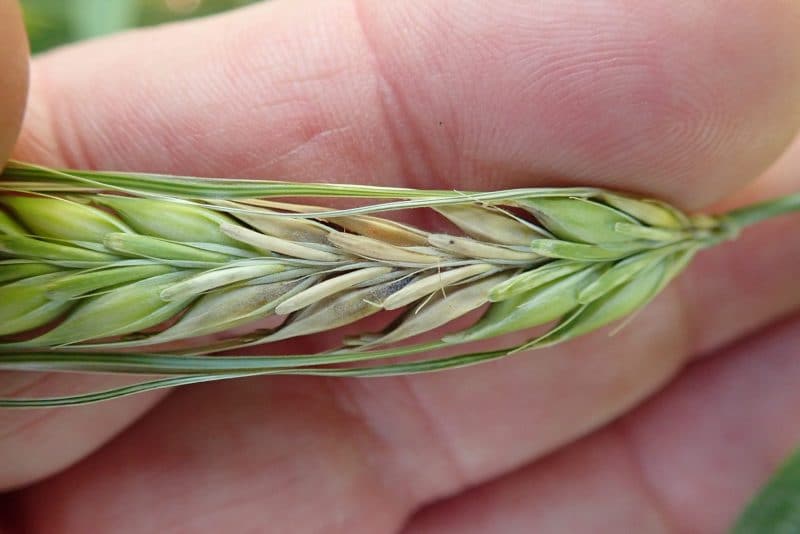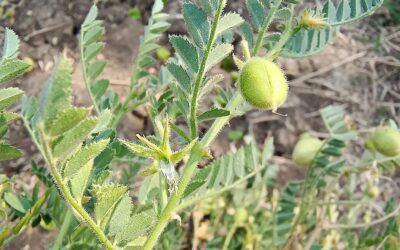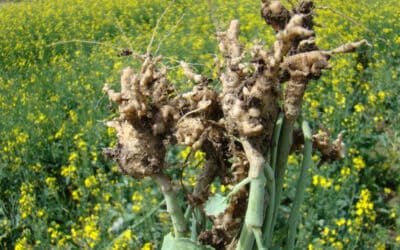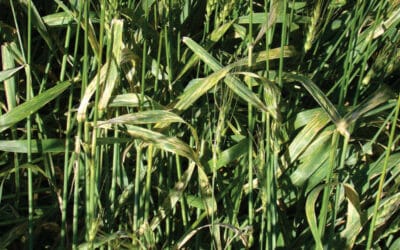With fusarium removed from Alberta’s Pest and Nuisance Control Regulations, the seed industry is looking forward to a future where farmers will have quicker access to new seed varieties and more research work done on the plant disease.
The Alberta seed industry was starting to give up hope after years of advocating for changes to the provincial fusarium regulation. While the regulation had been made with good intentions back in the early 2000s, the situation had changed, and Alberta was finding itself lagging behind its Prairie neighbours.
“Some of the regulations were outdated. And from across the province, different areas had different issues with fusarium. They were trying to manage it according to their local areas, but it was more of a regional problem,” Tom Coppock, president of the Alberta Seed Processors, says in a phone interview.
In the mid-1990s, fusarium head blight was found in milling wheat in both Saskatchewan and Manitoba, with the disease being declared of economic importance in areas outside southern Manitoba in the late 1990’s. Adding to the spread, drought hit Alberta in the early 2000s. To keep livestock fed, feed was brought into southern Alberta from other Prairie provinces such as Manitoba. Some of the plant material was infected with fusarium which resulted in importing the plant disease to Alberta fields.
To fight back and try to halt the spread, the provincial government placed Fusarium graminearum, which is the main causal organism of Fusarium Head Bight, under the Pest and Nuisance Control Regulation. This meant any seed with even a trace amount of fusarium was not allowed to be planted in Alberta. In Manitoba and Saskatchewan, seed with small percentages of fusarium were allowed.
“As time went on, we were finding that fusarium was no longer confined to southern Alberta. It had moved in on its own accord from Saskatchewan,” Ward Oatway, past president of the Alberta Seed Growers, says in a phone interview. “It’s been slowly creeping westward from there.”
In the seed industry, growers were finding themselves with fusarium infected seed. If even a trace of fusarium was found on seed, growers were forced to either export the seed to Saskatchewan or Manitoba, sell the seed lot as commercial grain losing the seed premium, or even destroy it. Even when seed could be heat treated to remove the risk of spreading the fusarium, it was still not legal to sell in Alberta.
The industry joined together to form an industry working group and started advocating for the government to change the regulation. At times they would get close to having the restrictions modified but then an election would happen, and the new administration would either not want to touch a regulatory amendment or they’d be back at the start of the process all over again. Finally, on June 3, Alberta Minister of Agriculture and Forestry Devin Dreeshen signed a ministerial order removing Fusarium graminearum from the Pest and Nuisance Control Regulations.
“The regulations, the way they were, were physical control and the way the pest travelled was by air,” Renee Hoyme, president of the Alberta Seed Growers, explains in a phone interview. “It’s nice to know the minister realized you can’t control fusarium by controlling the movement of the seed.”
The restrictions were also causing stress for farmers as there was a stigma around fusarium being found on your farm. Trent Whiting, SeCan’s Alberta and British Columbia marketing rep was finding a lot of his customers and farmers were treating fusarium as something they were ashamed of and wouldn’t want to talk about.
“I’ve seen that stigma and you have to talk them down,” Whiting explains in a phone interview. “You sprayed, you bought certified seed, you did everything right and you still have it. That doesn’t make you a bad farmer.”
Whiting is hoping the stigma will be reduced with the regulation changes as Alberta will now be able to work on managing fusarium instead of trying to rid fields of it.
Advancements Hindered
Prior to the changes, research work had been limited in Alberta which was making it hard to find ways to handle fusarium infections. Researchers could only conduct tests on fusarium if it was naturally in the soil, and they couldn’t run controlled trials as they weren’t allowed to plant fusarium infected seed.
“We haven’t been able to come up with an Alberta approach on how to really manage it because we can’t do any of the testing of variety, screening, or even testing of products here, because we’re never able to even introduce the inoculum into a trial,” Whiting says, adding Alberta is a large province with different conditions compared to its Prairie counterparts.
Whiting is also the parent seed coordinator for SeCan in Western Canada and is in charge of planning seed trials. With the Alberta fusarium restrictions, he would find himself picking growers in Saskatchewan and Manitoba over Alberta to try out new varieties. By reducing the amount of seed trials done in Alberta, it limited the release of new varieties.
“We were finding that even if a variety had better resistance to fusarium and everything, the breeding program in the seed distribution or the seed multiplication sites were in areas that had fusarium,” Oatway says. “It was extremely difficult for seed growers in Alberta to get seed the first year of a new variety.”
New seed varieties would launch in Alberta a few years after they had launched in Manitoba and Saskatchewan. AAC Brandon wheat launched in Alberta a year after the rest of the Prairie provinces because the stock seed had some fusarium in it, Whiting says. AC Brandon is now the most widely grown variety in Alberta.
On Oatway’s farm, he was also having problems with receiving reliable supplies of certain stock seeds. He had grown a barley seed variety from Manitoba but wasn’t able to get stock seed every year as they were fusarium infected.
“We get one, two years and then it’s like, well I don’t have any and I can’t get any,” Oatway says. “We still get phone calls about it. And it’s like, ‘Oh sorry, I can’t get the stock seed.’”
He weighed bringing in extra seed on non-fusarium years in order to have a supply, but quickly realized it wasn’t worth the extra money it would take to store the seed.
Future Opportunities
With the regulations changed, the seed industry is now turning its attention to future opportunities as they learn how to control fusarium and hopefully reduce the incidence of it.
“We still are advocating for farmers and trying to educate them about best management practices,” Hoyme explains. “Just because fusarium is deregulated doesn’t negate the need to test your seed to know if it’s infected, to treat your seed before seeding it, do crop rotations and follow best management practices to still control the spread.”
The restriction easement should give Alberta farmers access to new seed varieties sooner, while also allowing for further testing to be done in the province to find better ways to manage and deal with fusarium. Seed testing will remain key though for fusarium management, as most seed plants will still require seed to be tested.
“Now we’re going to be able to be open about the situation with farmers,” Coppock says. “If a seed sample has a low level or a trace level, then that’s where we can discuss the best management practices to treat your seed and how to deal with it going forward from there.”








